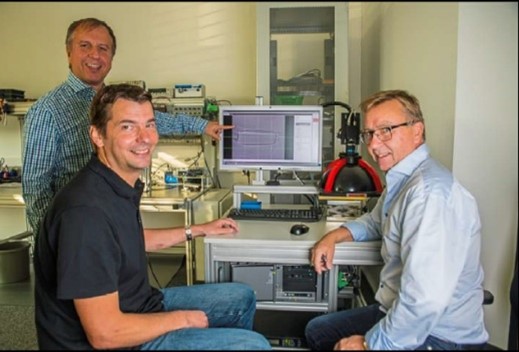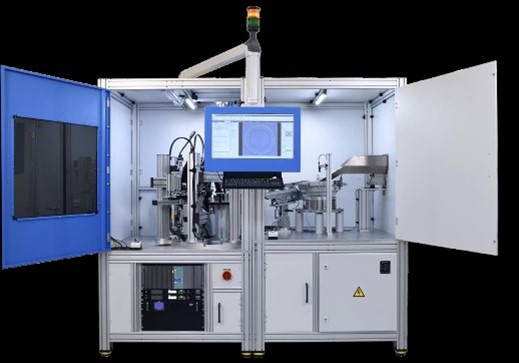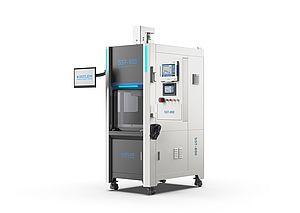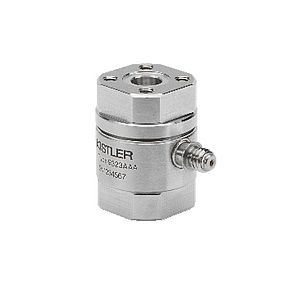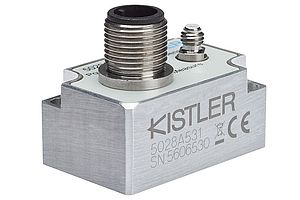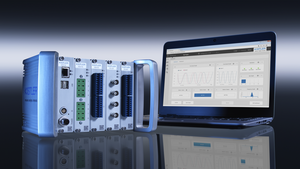By integrating test automation systems from Kistler into its fully automated production lines, the Swedish manufacturer Zinkteknik was able to attain true zero-defect production – even for very high volumes.
Most of us know zinc as a material that can protect iron and steel parts against corrosion. But it is capable of doing far more than that: for example, it can be used for die-casting of high-quality parts in large volumes. The team at Zinkteknik AB knows almost everything about zinc: at the headquarters of this manufacturing company in southern Sweden, you can even attend a “Zinc School” to deepen your knowledge of this versatile material and its industrial applications. Zinkteknik’s CEO Jens Svensson explains the advantages of working with the material: “Zinc is very design-friendly. You can realize almost any geometry from a single block. It’s a highly resilient and ductile material, but it also allows narrow tolerances. A huge variety of different coatings are possible with zinc, and it’s ideal for low-energy recycling thanks to its relatively low melting point.”
Zinkteknik has achieved successful growth ever since it was founded in 1985. Its 170-strong workforce is split between two European sites – at Bredaryd in Sweden, and Mostar in Bosnia (since 2005). Precision parts manufactured at these plants are mainly supplied to the automotive industry, but also to customers in other sectors including electronics, ICT and construction. “The requirements always get higher over time, especially for safety-critical parts in the automotive industry such as seat belt components. We manufacture more than 300 million parts per year, and we focus our efforts on one goal above all: the highest possible quality,” Svensson adds. As a Tier 2 supplier of parts to OEMs and car manufacturers all over the world, Zinkteknik has to meet demanding quality standards – and “zero-defect production” is the motto for the automotive industry in the 21st century.
Reliable and efficient quality assurance
Per-Erik Edman, Quality Assurance Engineer at Zinkteknik, explains the challenges of achieving zero-defect production in his specialty field of zinc die-casting: “With quantities of 30 to 40 million for just one single part in a year, our volumes are so high that there’s no chance of inspecting each individual part. This prompted us to implement in-process monitoring to ensure the quality of the parts we produce.” Edman’s team had already reduced the complaint rate to less than ten per year and series – a very low figure in relation to the enormous volumes involved. Now the question was: how to improve on that success and attain zero-defect production? “As it is often the case, the last step is the most difficult. But we had a stroke of luck: one of our customers, a Tier 1 supplier, recommended us to take a look at test automation solutions from Kistler,” Edman continues.
Shortly after making first contact with Kistler in 2016, Zinkteknik ordered a KVC-821 – the latest-generation automated test and sorting system for end-of-line quality assurance. Zinkteknik’s engineers joined forces with Kistler’s image processing experts to determine the best camera configuration for identifying faulty automotive safety parts. “When we visited Germany to work on the fault analysis with the Kistler team, we had a very open discussion on what is possible and how best to achieve the desired results. The Kistler experts were also very clear about what was not possible – and at the same time, they explored various alternative ways of meeting the challenge.”
Advanced quality assurance for high-volume series parts
The KVC-821 from Kistler is an automated test and sorting system equipped with a rotating glass plate and up to eight cameras. Key features:
• Testing rates of up to 600 parts/min
• Comfortable software for easy machine programming and operation
• LED flash illumination, transmitted and reflected light (telecentric, coaxial, diffuse)
• Surface-independent check thanks to “shape from shading” technology
• Dimensional, surface and hardness testing, further custom tests on request
All test automation (TA) solutions from Kistler are designed at the German site in Straubenhardt. Here, specialized engineers rely on 30 years of experience in global TA business, a high degree of vertical integration and competencies in both software and hardware for image processing.
With the help of the KVC-821 from Kistler, Zinkteknik was able to efficiently check millions of manufactured zinc parts for geometry and surface defects – and before long, they reached the all-important zero-defect goal. “The result was very convincing”, Edman recalls. “We supply one of our biggest customers with critical automotive parts that are intended to save lives – and we no longer received any complaints whatsoever from that customer.” Encouraged by this success, Zinkteknik then explored the possibility of integrating more test automation cells from Kistler into its production lines so as to achieve perfect results from other manufacturing projects.
Fully automated end-of-line testing and sorting
Zinkteknik now operates seven KVC-821 test systems to monitor production of five different parts – with two more systems to come in the near future: another one for the Swedish site, and the first one for Bosnia. Karl Persson, Production Engineer at Zinkteknik, explains the process: “We started out by using the first machine from Kistler as a standalone solution, so some steps had to be performed manually. But naturally, we wanted to integrate the test cells into our fully automated production lines. At a certain point, we realized that we could only achieve that goal by thinking big.”
Quality check for safety-critical parts: how does it work?
To ensure that high volumes of sensitive automotive parts are 100% free of errors, one essential test is to check their surface and outline for blisters. This is achieved through a combination of two different imaging methods:
• 2,5D shape from shading
• 3D laser triangulation
The camera picture taken is mathematically processed and analyzed by the KiVision Software which decides within milliseconds if a respective part is OK or NOK. An important requirement is the optimal definition of what should be seen as a defect – to prevent both faulty parts and pseudo-scrap (parts that are sorted out despite being appropriate for the application).
Zinkteknik responded to this new challenge by expanding its Swedish production site in 2018 to accommodate full integration of the end-of-line testing solutions from Kistler, which are now installed in a new hall. “We currently have seven machines connected to our automated production lines, so we can easily balance varying volumes of different parts during the year. We’re still working on a fully automated forklift feed, and we’ll likely complete that project by the end of 2020,” Persson adds. “We’ve been operating test automation systems in real production for about three years now, and we’ve received tremendous support from Kistler throughout that time. Their team was always standing by to answer our questions, they supported us with overcoming many challenges, and they even helped to generate new business opportunities for Zinkteknik.”
The success of zero-defect production has opened up new avenues of approach to the company’s existing customers as well as opportunities to win new business. As Kenneth Magnusson, Sales Engineer at Zinkteknik, confirms: “When I visit customers, sales engineers from Kistler are ready to provide support as soon as we ask them. This adds weight to our presentations at meetings with potential customers. And that’s yet another reason why we are so appreciative of our partnership with Kistler, and why we want to step up our collaboration with them as time goes on.”



